review Samsung’s latest Android-based masterpiece has a list of next-generation features that reads like the specifications for an interstellar spaceship, and a pedigree which rivals that of the USS Enterprise. But can the Korean manufacturer’s latest smartphone opus truly be described as “Galaxy-class”? Read on to find out.
Design
If you’re familiar with Samsung’s now annual Galaxy S smartphone releases, then before the release of the Galaxy S III you probably thought you had the company’s design aesthetic down pat. The original Galaxy S, released in mid-2010, was a gray and black curved rectangle reminiscent enough of Apple’s original iPhone that the similarity has been discussed extensively before various courts globally. The Galaxy S II, again mirrored the next generation of iPhones, the iPhone 4 and 4S, by flattening out its design and flattening out its previously curved contours.
But with the Galaxy S III — and no iPhone 5 yet on the horizon — Samsung has chosen to change things up, taking a radically different design approach to its previous models.
From the first Galaxy S, the GS3 takes a more curved approach. Gone is that flat black oblong which the GS2 featured. Curves are back, and the GS3 features significantly more rounded edges around both its edges and back. The GS3’s overall form appears to draw more from HTC’s curvaceous legacy than from Apple’s current square and flat ethos. Gone also are the muted blacks and greys of Samsung’s design heritage. Instead, we get a symphony in ‘marble white’ or ‘pebble blue’ shiny plastic, with an air-brushed aluminium lookalike rim running around the edge.
Above the Galaxy S III’s generous 4.8″ screen sits a small speaker grill, two small sensors and a camera, while below it sits three capacitive Android buttons, above a smallish home button. On the top of the model sits its 3.5mm headphone socket and a little lip which helps you remove the smartphone’s back cover to gain access to its SIM card and microSD card slot (yes, it has a microSD slot — rejoice!). The 2100mAh battery is removable.
On the left-hand side of the phone, built in to the rim, is its volume rocker, and on the right-hand a small on/off button. On its back sits the Galaxy S III’s main camera, equidistant from its microphone and flash.
Two things are immediately apparent with respect to the Galaxy S III’s design aesthetic when you pick it up. Firstly, this is a phone which absolutely screams “build quality”. Every single edge has been polished and smoothed, every component is integrated perfectly into its neighbour, and overall you just feel like you’re holding something special. Amongst smartphone manufacturers, we’ve really only seen a couple that are able to achieve this level of design; Apple being the most noteworthy, alongside Nokia and perhaps HTC. This is the goods when it comes to smartphone build quality, and when your friends and family pick up your Galaxy S III they’ll notice it’s something special.
Secondly, there is the screen. At 4.8″, the GS3’s screen is one of the largest on the market, although not quite as large as the jumbo 5.3″ model on its sister phone, the Galaxy Note. If you hold the GS3 next to almost any other recently popular smartphone (for example, the iPhone 4S or HTC Sensation), you’ll notice just how large the GS3’s screen is. This is also emphasised by the fact that there isn’t a lot of wasted space around the screen. On the front of the GS3, almost all of the space is taken up by the screen, with everything else being a secondary concern. Buttons? Why do we need buttons? We’ve got a huge whopping beautiful touchscreen!
Features
Right now, the Galaxy S III is one of the highest-end smartphones on the market, and this shows in its features list.
It runs version 4.0 (Ice Cream Sandwich) of Google’s Android operating system (with Jelly Bean on the way, or already available if you like custom ROMs), its screen resolution is 1280×720 (for very sharp clarity) and based on Super AMOLED technology, it comes with an eight megapixel rear camera and a 1.9 megapixel camera on its front, it has an accelerometer, a gyrometer, GPS, NFC, Bluetooth 4.0, a digital compass, a microSD slot and it runs a 1.4GHz quad-core CPU, as well as a specialised graphics chip.
The phone’s battery is removable and rated at 2,100mAh, and it can be bought with 16GB, 32GB or 64Gb of on-board storage space. A micro-USB port provides wired connectivity, and the touchscreen is actually covered with version 2 of Corning’s popular Gorilla Glass, for extra, well, toughness. In short, if you can name it, the Galaxy S III has it, as you’d expect from a brand new, top-end Android phone in mid-2012.
There are also quite a lot of software customisations and features which Samsung has added into the mix. Samsung has updated and refined its TouchWiz interface which sits on top of Android; Siri-like voice interaction is possible through a new app, S Voice, there’s a new feature called S Beam which lets fellow Samsung users quickly and easily send each other files wirelessly, you can play media content to a TV via AllShare Cast, and so on.
One issue which Australian buyers of the Galaxy S III will need to be aware of is that while the phone does support all of Australia’s 3G mobile networks, it does not support the 1800MHz 4G networks which have been launched by Telstra and Optus. Although there have been hints that a 4G version of the Galaxy S III may be on its way, the lack of 4G speeds is a major disappointment for Australian buyers. In a year’s time, 4G coverage will be highly pervasive around Australia, and there definitely is already a strong demand for 4G speeds locally, with Telstra, for example, already having signed up some 200,000 4G customers and being rumoured to actually have signed up 500,000.
It also seems very likely that when Apple launches the next iPhone, likely later this year, that it will do so with 4G capability intact. Given this likelihood, and the fact that HTC already has a flagship 4G model available in Australia courtesy of the One XL, which we consider to currently be the best smartphone available in Australia, the lack of 4G speeds on the Galaxy S III is a major issue for Samsung and will put some buyers off.
But if you examine the smartphone’s other features, you’ll find that they’re pretty much unbeatable. The One XL has 4G speeds, for example, but the Galaxy S III is one of only a couple of smartphones currently available which has a quad-core CPU. Huawei’s Ascend P1 smartphone, for comparison, also has an 8 megapixel camera; but it doesn’t have anywhere near the software innovation that the Galaxy S III has. You can make these comparisons endlessly; if there is a feature which you want and have been having trouble finding in a smartphone, the Galaxy S III will very likely have it.
Performance
Put simply, using the Galaxy S III is a dream.
First, let’s talk user interface. Recently I’ve had the pleasure of reviewing high-end rivals to the Galaxy S III — smartphones with similar specifications such as the HTC One XL, the Huawei Ascend P1, Nokia’s Lumia 900 and this week I’ve even got Motorola’s RAZR V in for testing. All of these models, on paper, stack up pretty similarly to the Galaxy S III — similar operating systems, release timeframes and hardware.
But in practice, Samsung has polished the Android operating system which runs the GS3 and integrated it so well with the hardware that the GS3 sometimes feels in a class of its own.
The GS3 has the same ‘instant’ responsiveness for app launching and navigating that Apple does with the iPhone 4S, for example, and that Huawei has come close to achieving with the Ascend P1. But it also has a much more fluid and dynamic display, with the more vivid icons, background images, little UI flourishes and so on that are common to HTC’s One series. But where the One series (we own a One XL, for example) can suffer from little UI jags and delays occasionally, the GS3 does not. Nokia’s Lumia series has done what few Windows Phone 7 manufacturers have been able to do so far — integrate Microsoft’s mobile operating system with appropriate hardware in a beautiful way. Samsung achieves this same synthesis with the GS3, but does so in a way that retains the deep nature of the Android operating system.
It’s hard to describe precisely what I’m talking about here, but if you get into a retail outlet and check out the Galaxy S III for yourself, I’m sure you’ll realise what I’m talking about. Samsung has brought much of Apple’s obsessive attention to detail to the GS3, and that is a great thing. It’s little touches like the way you can unlock the GS3’s lock screen by swiping anywhere, or the transitions between different screens. In a word, it’s just all ‘smooth’.
Another fantastic element of the GS3’s performance is its battery life.
Right now, smartphone battery performance varies wildly between models, especially in the Android market. One of the best models is Apple’s iPhone 4S, which seems to go an age before it needs a charge, and we’ve also found Nokia’s Lumia models also quite good. But quite a few of the Android smartphones currently available, especially those which support 4G, can barely last through a day of moderate usage before they need a top-up of juice (HTC One XL, we’re thinking of you here).
We wouldn’t say the Galaxy S III has as strong battery credentials as the iPhone 4S, but it’s not too far off. We didn’t find ourselves needing to charge it more than a few times over the first week we tested it, and in the second week we literally fully charged it, then left it alone on our desk for eight days or so, to come back and find it still had some charge left. Sure, it was complaining of low battery — but it was definitely still functional. Any smartphone which can do this has our seal of approval when it comes to battery life. If this had been the One XL, it would have died halfway through the week. You can find a fuller analysis of the GS3’s battery life at GSMArena.
Other aspects of the GS3’s performance were also exemplary. Application performance and video playback was pretty much perfect, and its camera is one of the best available in a smartphone today. We found it pretty hard to fault the photos it took, which were clear, crisp and full of colour and light. Videos were similarly stellar. The screen is large, brilliant and with lovely colours.
One area which we didn’t really have that much of an opinion on — positive or negative — was the extra bundled apps and user interface controls which Samsung has added in to the GS3 — features such as S Voice, its Siri-like voice recognition software, S Beam, which lets fellow Samsung users quickly and easily send each other files wirelessly, and AllShare Cast, which lets you play media content to a TV. There’s also some unusual motion controls, bundled in, such as the ability to automatically call a contact whose details are already on screen by simply bringing the GS3 up to your ear, or the ability to be notified about missed calls and messages simply by picking up the phone. You can check out a video of some of these controls at YouTube.
From what we can see, these features more or less work, but sometimes only within certain limited parameters — such as very limited devices that can actually receive an S Beam, for instance — and sometimes a bit shakily (voice recognition, sadly, is still a bit touch and go, whether it’s S Voice or Siri). And some can be useful, especially when they cut steps out of the user interface, such as not having to actually click a contact’s name to call them.
But in a broader sense, we found it hard to see most people using most of the additional software features Samsung has bundled into the Galaxy S III. Don’t get the wrong impression — in no way are these apps and features ‘bloatware’ in the usual sense of the word — but they’re not quite mature yet, either, and they’re not standardised (more importantly).
Personally, and I think I speak for a large portion of the Android user base here, I would prefer it if manufacturers would ship stock Android images with their smartphones, so that as a user I don’t need to learn the difference between HTC’s Sense and Samsung’s Touchwiz, for example, every time I switch models in a new generation. It’s nice that Samsung is trying to innovate the mobile phone user interface paradigm for its customers, but I’m not specifically a Samsung customer — I’m primarily an Android customer — and I’d like to see more recognition from handset manufacturers of this dynamic.
However, it should also be recognised that custom ROMs with stock Jelly Bean images are already available for the Galaxy S III as well, and thanks to the popularity of this smartphone, it’s likely to be one of the most-supported models for custom Android distributions such as CyanogenMod. With this in mind, if you don’t want the extra Samsung features, you don’t need to keep them — you can just go back to basics if you want.
Overall, we found it very, very hard to fault the Galaxy S III’s performance. If you take the lack of 4G support out of the equation, this is a smartphone which performs better than any other model we have seen on the market. Its screen and many of its features best the iPhone 4, its user interface and processing power beat its Android rivals, and it is, of course, far ahead of the Windows Phone 7 competition in so many ways.
Conclusion
As we’ve reported previously, Telstra’s Next G network has been somewhat congested of late in some CBD areas, leading Delimiter to recommend users to switch onto its incredibly fast 4G network. And with Optus launching its own (potentially even faster) 4G network on the same frequency this month, there are ever more reasons daily to upgrade your handset to a 4G model, as hundreds of thousands of Australians have already done. If you don’t, you might regret it in a year. The only 4G smartphone which we currently recommend is HTC’s stellar One XL model.
However, if you don’t need 4G speeds, then the Samsung Galaxy S III is currently the best smartphone in Australia. This is the goods, people — a world-beater in almost every area (software, hardware and so on), that you’ll be happy with for several years to come and will probably pass on to a family member after that point. The hype is justified. And if Samsung brought out a 4G version of the Galaxy S III, we’d strongly consider switching from our HTC One XL to that model. Your move, Apple. Samsung’s stolen your crown. What you gonna do?
Other reviews of the Samsung Galaxy S III we liked; Engadget, The Verge, PCWorld Australia, CNET.com.au.
Image credit: Samsung


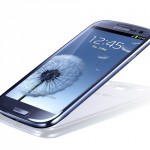
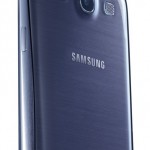
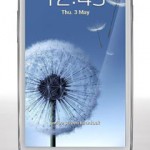
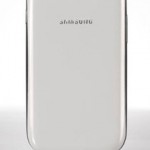
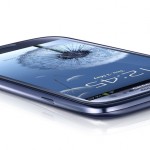
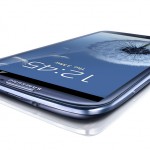
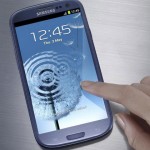
Touchwiz was the biggest killer for me, seeing as I normally don’t root for at least 6 months if not 12. That 4G and the fact that the S3 just felt….less somehow than the XL.
Sure Sense is slower and a bit buggy (Sense 4.1 has been leaked and apparently is much faster- not surprising seeing as it’ll likely come with JB and Project Butter underneath…) but it is EMINENTLY more beautiful and nice to look at .
Touchwiz, by contrast, looks if you’ll excuse my vulgarity, like someone smooshed dogs bollocks on the screen IMO….
> (Sense 4.1 has been leaked and apparently is much faster- not surprising seeing as it’ll likely come with JB and Project Butter underneath…)
I flashed Sense 4.1 (via the Insertcoin 8.0.5 [Tegra 3 One X] ROM – Still on Android 4.0.4 for the moment) last night and it’s deliciously smooth, and fast. Still a little buggy though.
Yes, it is fast. Its so fast it makes you wonder if there is any point building a phone with more horsepower. If you have an SDCard in it remove it; and unbelievably it will get faster. And it will get faster again once it gets Jelly Bean.
You didn’t mention it supports the Qi wireless charging standard. If I owned one I would be putting a Qi pad on the bedside table. That would be one less night time ritual I would have to think about.
All those advantages aside, it suffers from one defect – it’s too small. These devices still think they are phones; things that work perfectly well when they the size of a matchbox. But who uses the smartphone predominantly to make phone calls? For all the rest of the uses you need the largest device that fits comfortably in one hand. The Galaxy Note seems about right, but it needs an update.
I wonder what Apple thinks of all this. Particularly the OLED display. Samsung is using their Galaxy series to push OLED development. It has a far better colour gamut than LCD, but on my Nexus it is uneven. That’s fixed on the S III. If Apple wants the best display available for their devices, the time can’t be far away before they have to buy it of Samsung. Interesting times.
@Russell
All those advantages aside, it suffers from one defect – it’s too small.
That’s your opinion :P I don’t have slabs for hands :D If you want something bigger, get a tablet :D
The Galaxy Note seems about right, but it needs an update.
Coming, end of this month I believe: http://businesstoday.intoday.in/story/samsung-plans-august-29-release-date-for-galaxy-note-2/1/186997.html
Samsung is using their Galaxy series to push OLED development. It has a far better colour gamut than LCD
Yes and no- side by side the AMOLED on the S3 is much more vibrant than the XL (SLCD). However, it is ALSO blue and washed out. THAT is one reason I chose the XL.
http://cdn2.sbnation.com/imported_assets/1059095/vs05-03_20-02-48x1020_gallery_post.jpg
(not a brilliant photo, but illustrates the point)
http://mybroadband.co.za/news/wp-content/uploads/2012/06/2012-Superphone-comparison-Samsung-Galaxy-S3-vs-HTC-One-X-vs-Galaxy-Nexus-vs-iPhone-4S.jpg
(That’s a better comparison (2 on the left) but it’s still hard to see)
There’s alot still to come with LCD tech I believe.
@seven_tech
Yes and no- side by side the AMOLED on the S3 is much more vibrant than the XL (SLCD). However, it is ALSO blue and washed out. THAT is one reason I chose the XL.
True. But each generation of OLED has been a significant improvement over the previous one. Right now there are two issues. One is colour management (the blue cast you mention), but that surely that just a case of getting the ICM profile right. The other is display life and power consumption, which leads to the manufacturers deliberately keeping the display brightness turned down. My personal solution to both those problems is to create my own background image. I have no artistic skills, but you don’t need any – it’s totally black. It has the nice side effect of making the display easier to read.
Anyway the point is given the rapid advances Samsung is making with their OLED displays it seems likely both those issues will be fixed within a few iterations. LCD on the other hand has no hope of matching OLED’s colour range or it’s dynamic range.
Yes and no- side by side the AMOLED on the S3 is much more vibrant than the XL (SLCD). However, it is ALSO blue and washed out. THAT is one reason I chose the XL.
I agree. I’m quite surprised that it wasn’t mentioned in the review that the 720p screen on the GS3 uses a pentile sub-pixel arrangement, giving it effectively 1/3rd less sub-pixels than a full RGB 720p LCD or if it were to use the Super AMOLED Plus technology that was present on the GS2.
The first thing I noticed when looking at the GS3’s screen was the blue hue and highly over-saturated colours. Whites just aren’t white and orange looks outright weird (as do skin tones). Sure it has awesome blacks, but at the expense of fine detail, sharpness and colour accuracy. This is easily evident by placing the HTC One X next to the GS3 and comparing screen quality. The HTC One X’s Super LCD screen is clearly sharper, brighter and more accurate.
Some people don’t notice pentile’s downsides at a high resolution of 1280x720p (even though its technically not full 720p) and that’s great, but for me its noticeable and distracting and the screen is the no1. most important thing to me on any device.
Samsung made a huge step forward with the GS2 by abandoning the pentile arrangement and adding a white stripe to make a full RGB sub-pixel arrangement. It gave the SGS2 one of the best looking 800×480 screens out there. I’m assuming the only reason they didn’t stick to a “Plus” screen for the GS3 is cost, or difficulty building such high quality displays in massive volumes. That’s totally understandable, but I really hope to see next year’s Galaxy S4 make the leap to S-AMOLED Plus.
Renai,
I’m sure that the Samsung is not overheating enough to cook barbeque.
It’s a grille not a grill.
8-)
Great review. Will buy one just to annoy iPhone owners :-)
LOL Hubert, that WILL annoy my brother, he’s an iTurd!
It’s a nice phone, but for some reason my Galaxy Tab 10.1, which used to tether to my Motorola Atrix just fine, doesn’t like talking to my new SIII.
Conversely, my Motorola bluetooth headphones used to disconnect from my Atrix, now they’re rock steady. It’s great that manufacturers ensure interoperability, but are they forgetting to test their own devices with each other?
Interesting review. It does however miss what is for me a crucial bit of information. I presently have a HTC Sensation with the latest ICS update. HTC have a “Sync” application that installs on Windows and uses Ms Outlook to sync the address book and calendar and some other stuff. It does not backup text messages.
Does the SIII have a Sync function? If so how does it work?
Comments are closed.